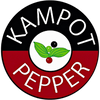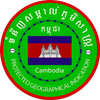While the cuisine of Vietnam, China, or Japan is still exotic to us, but far from unknown, in the case of Cambodian cuisine (or if we want to be traditional, Khmer cuisine) we are talking about flavors that are a great mystery not only in the Czech Republic but also for many other European countries. So what does a traditional Cambodian feast really look like?
Rice and freshwater fish play an important role in the diet of the Khmers. Moreover, real connoisseurs are in rice – Khmer cuisine uses over 2000 varieties! These are ingredients that are ubiquitous in the country thanks to the Mekong River and Tonle Sap Lake. This lake expands during the monsoon season to an area of up to 16 thousand square kilometers and brings beneficial moisture to the rice fields, creating a perfect environment for fish breeding.
France, Vietnam, but also China
Traditional Khmer recipes are influenced by a whole range of neighboring countries. To the west, Thai influences are noticeable, while to the east, Vietnamese ones. The cuisine was also influenced by Chinese immigrants, and we must not forget the French influence, to which Cambodia was subject during the colonial times of this country by the French.
Traditional ingredients are therefore similar to those used in other Asian countries. Besides fish and rice, these include palm sugar, limes, garlic, chili, coconut milk, lemongrass, shallots, and so on.
Among the traditional dishes is, for example, Amok fish steamed in coconut milk and wrapped in a banana leaf. In this dish, curry paste also plays an important role. It is a national dish that we could compare to our svíčková (a Czech beef dish), although in this case we are talking about a very healthy svíčková. :-)
How do they sin in Cambodia?
Even Cambodians know how to indulge in a bit of the unhealthy, as demonstrated by Twa Ko, a traditional sausage. It is made from pork or beef and various mixtures of spices. A proper Twa Ko should contain 20 to 25 percent fat. They prefer to grill the sausage, or enjoy it with vegetables and rice.
Nom banh chok is the equivalent of a Czech roll with butter and tea. It is a broth with rice noodles in curry, which Cambodians like to eat for breakfast. These noodles are topped with fish sauce and served with plenty of vegetables such as cucumber, bean sprouts, banana flower, and so on.
Cambodians also have a sweet tooth. In their case, desserts mostly consist of sweet fruit again accompanied by rice. You wouldn’t believe how many different types of bananas actually exist until you visit some Cambodian markets. Besides bananas, mango, pineapple, or durian with its unusual taste and smell, which Asians literally adore, are very popular fruits.


























